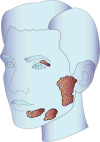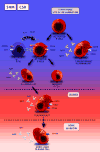Emerging Treatment Models in Rheumatology: IgG4-Related Disease: Insights Into Human Immunology and Targeted Therapies
- PMID: 28575535
- PMCID: PMC5575969
- DOI: 10.1002/art.40168
Emerging Treatment Models in Rheumatology: IgG4-Related Disease: Insights Into Human Immunology and Targeted Therapies
Conflict of interest statement
Figures





Comment in
-
Reply.Arthritis Rheumatol. 2018 Feb;70(2):318. doi: 10.1002/art.40362. Epub 2018 Jan 3. Arthritis Rheumatol. 2018. PMID: 29088581 No abstract available.
-
Implications of elevated C-reactive protein and serum amyloid A levels in IgG4-related disease: comment on the article by Perugino et al.Arthritis Rheumatol. 2018 Feb;70(2):317-318. doi: 10.1002/art.40365. Epub 2018 Jan 3. Arthritis Rheumatol. 2018. PMID: 29088583 No abstract available.
References
-
- Stone JH, Zen Y, Deshpande V. IgG4-related disease. N Engl J Med. 2012;366:539–51. - PubMed
-
- Kamisawa T, Zen Y, Pillai S, Stone JH. IgG4-related disease. Lancet. 2015;385:1460–71. - PubMed
-
- Mikulicz J. Über eine eigenartige symmetrische erkrankung der tränen und mundspeicheldrüsen. Stuttgart: Beitr.z.Chir.Fesrschr.f. Theodor Billroth. 1892:610–30.
-
- Riedel B. Die chronische, zur Bildung eisenharter Tumoren führende Entzündung der Schilddrüse. Verhandlungen der deutschen Gesellschaft für Chirurgie. 1896;25:101–105.
-
- Kuttner H. Uberentzundiche Tumoren der submaaxilspeichdeldruse. Bruns Beitr Chir. 1896;15:815–834.
Publication types
MeSH terms
Substances
Grants and funding
LinkOut - more resources
Full Text Sources
Other Literature Sources

